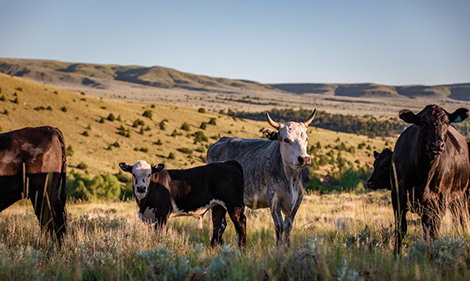AgWest delivers insights about agricultural commodities, land values and drought
In addition to market analysis on 10 major agricultural commodities and crop inputs, this month’s report also offers in-depth analysis from AgWest’s lending, appraisal and crop insurance teams in a Land Values Report and a Drought and Water Update. The AgWest Monthly Market Update also features unique insights into economic drivers impacting agriculture and forestry in the West.
AgWest’s outlook for major commodities is summarized below. Visit AgWestFC.com/industry-insights to view expanded analysis for each industry, monthly economic headlines, relevant data and trends and additional special reports.
Almonds and pistachios
Updated estimates suggest a smaller-than-expected 2024 almond crop at 2.8 billion pounds. Almond harvest is getting started and some producers face rising pest pressure and irrigation needs due to hot weather in July. The 2024 pistachio crop is generally progressing well and should come in at about 900 million to 1 billion pounds.
Apples
The first official estimate for the 2024 crop was 124 million boxes, a level that should support both packer and producer profitability. While heat stress will create challenges for many producers, the smaller crop size should support higher prices.
Cattle
Cattle producers are worried about whether consumers will continue to pay higher beef prices despite economic pressures, but the beef market remains strong due to increased competition among feedlots and packers. Meanwhile, extensive wildfires in the West are reducing available pasture, among other concerns.
Dairy
U.S. milk production declined for the eleventh consecutive month, with the western U.S. experiencing a steeper drop. Despite bullish dairy market reports and higher milk futures prices, July’s extreme heat and high input costs are expected to further decrease production and complicate herd expansion decisions.
Forest products
A relatively weak housing market is depressing demand for lumber and logs. Elevated interest rates remain a notable headwind and while they are expected to come down, housing demand is unlikely to increase in 2024. Despite these challenging conditions, timberland values remain strong.
Hay
Wildfires across the West have burned over three million acres, impacting hay drying times and quality. Hay prices are forecasted to weaken, with varied conditions reported throughout the West. Alfalfa export demand is low due to abundant supplies, low milk prices, a strong U.S. dollar, and economic challenges in East Asia, with expectations of continued low demand until hay prices drop or the U.S. dollar weakens.
Oranges and lemons
Domestic lemon supply has come down as Central Valley growers finish up the harvest of the 2023-24 crop. Remaining supplies will compete with imports from Argentina, whose fruit is reportedly large. The 2025 navel crop is expected to come down slightly from 2024 levels. The 2024 Valencia crop is experiencing strong supplies, quality and prices.
Potatoes
Producers’ hopes for balancing market dynamics with the upcoming potato crop are unlikely to materialize due to higher yields from ideal weather. Slow restaurant sales and international market slowdowns are pressuring the potato market, with U.S. exports of frozen potato products decreasing by 7.8% year over year.
Wheat
Despite drier conditions across much of the West, wheat yields range from average to above average. However, protein levels are lower than usual.
Wine and wine grapes
Wine grape crops are generally in favorable condition across the West; however, wildfires and intense heat may have slowed growth and sugar accumulation for some producers in California. An oversupply of grapes and slowing sales continue to characterize the industry.
